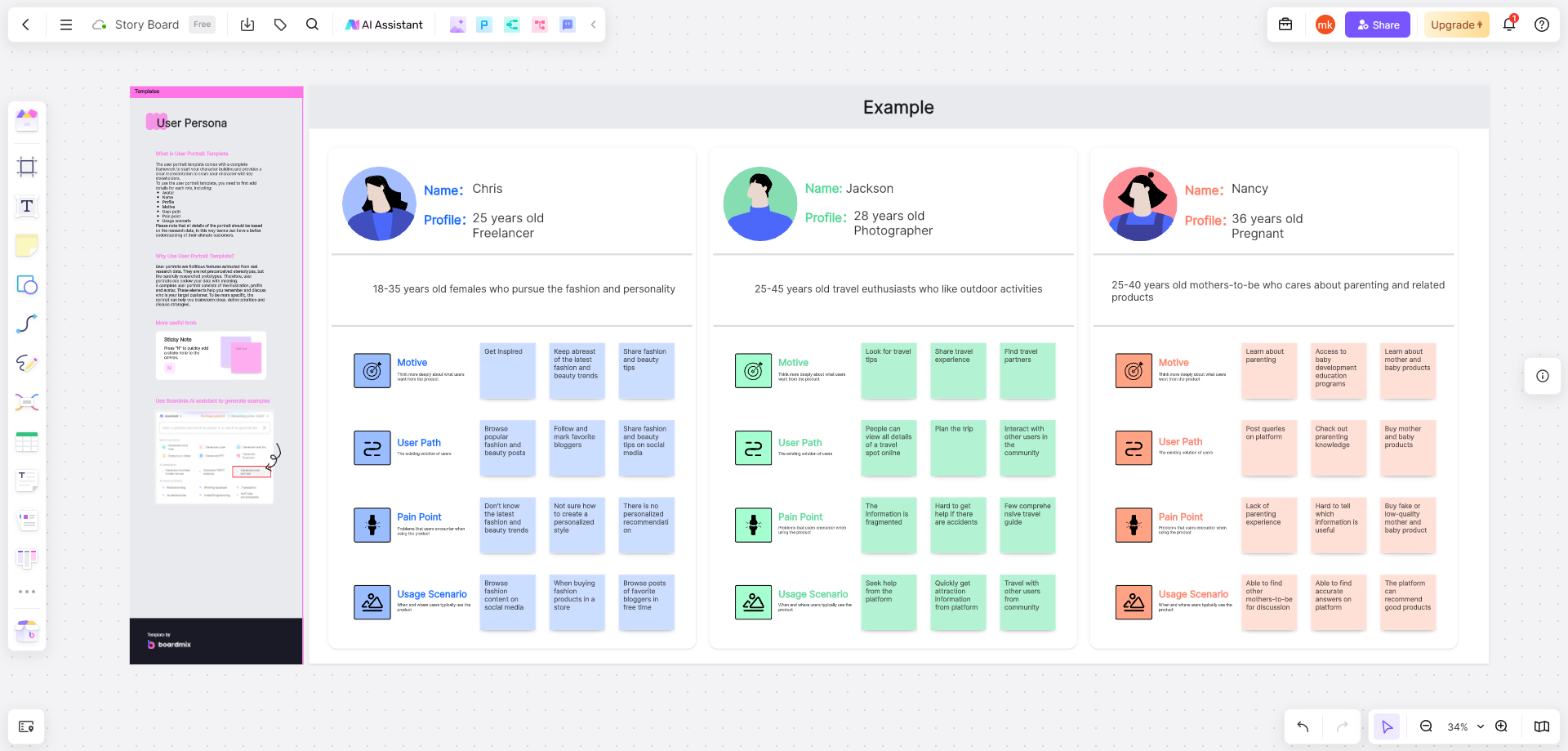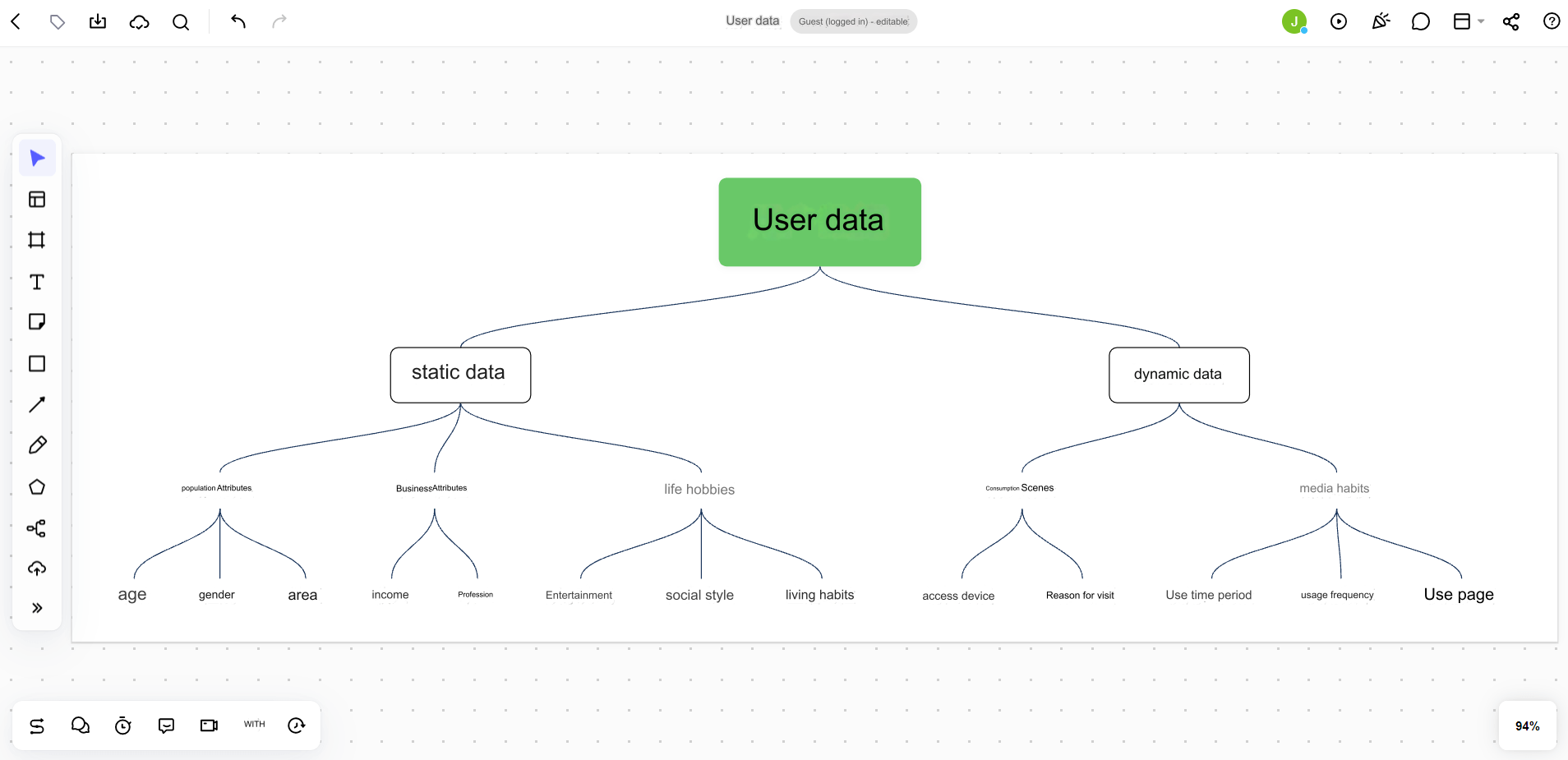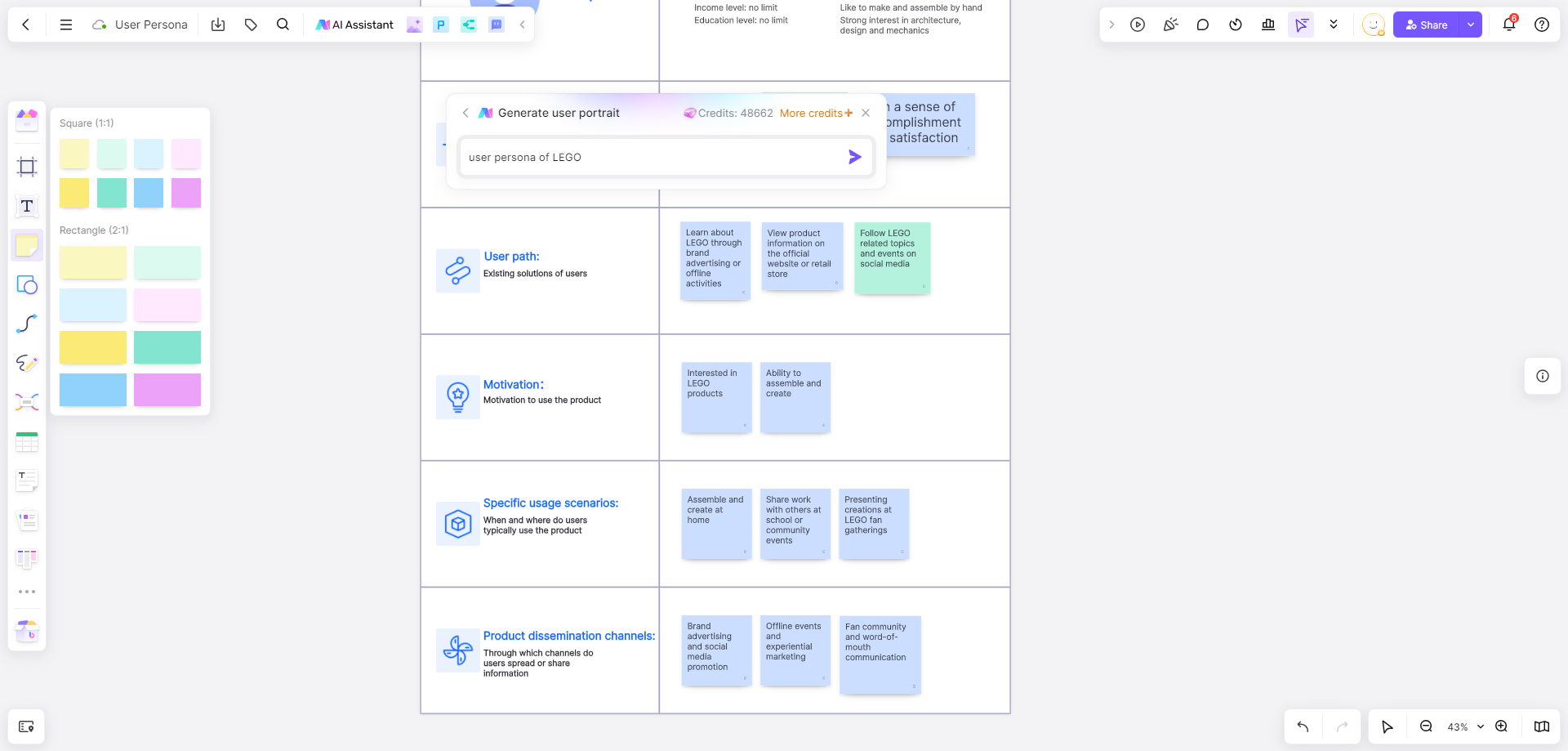In modern marketing and product design, user profiles help us better understand our user base and customize products and services based on their needs and interests. This article explores the definition, composition, content, and application of user profiles, helping you gain deeper insights into your target audience.
1. Definition of User Profiles

User profiles summarize and describe users' personal information, interests, behaviors, and other characteristics. They are tools that help businesses visualize and understand their target audience. The importance of user profiles lies in their ability to help companies precisely grasp user needs, enhance product user experience, optimize marketing strategies, and improve product and service appeal. They also aid in predicting market trends and reducing decision-making risks.
2. What Do User Profiles Include?
User profiles are comprehensive descriptions of individual users or user groups, typically encompassing various aspects to provide a thorough understanding of the user. Here are some common components:
Basic Information:
-Personal Information: Age, gender, marital status, etc.
-Geographical Location: Region, city, and sometimes specific coordinates.
-Occupation: Job, industry, and position.
Behavior and Preferences:
-Purchase Behavior: Purchase history, shopping frequency, and spending.
-Browsing Behavior: Website or app browsing habits, including pages visited and time spent.
-Search Behavior: Keywords and search frequency on search engines or platforms.
-Likes and Interests: Interests in specific topics, content, or products.
Social Information:
-Social Relationships: Friends, followers, and people they follow on social networks.
-Social Interactions: Activities such as posting, commenting, and liking on social media.
Device and Technology Usage:
-Device Information: Types of devices used, operating systems, etc.
-App Usage: Installed and used applications on devices.
-Technology Preferences: Preferences for specific technologies or platforms, like operating systems and browsers.
Time and Frequency:
-Active Time: Periods when users are most active.
-Usage Frequency: Frequency of product or service use, such as daily or weekly active users.
Emotions and Attitudes:
-Emotional Tendencies: Emotional expressions in social media and comments.
-Satisfaction: User satisfaction with products or services.
Geographical Information:
-Location Information: Users' geographical locations at different times, are useful for location-based services and recommendations.
User Lifecycle:
-Acquisition Channels: Channels through which users discover and use the product.
-User Stages: Stages in the product or service lifecycle, such as new users, active users, and lapsed users.

To build user profiles, use a tool like Boardmix. Boardmix is a versatile online collaboration tool that integrates AIGC technology, mind mapping, flowcharting, drawing, documentation, and more to enhance team efficiency and innovation. Boardmix offers several advantages for constructing user profiles:
-Diverse Collaboration Methods: Boardmix supports real-time online collaboration, allowing team members to collectively participate in creating and refining user profiles.
-Rich Visualization Tools: Boardmix provides various graphic elements, colors, stickers, and emojis to visually present user information, making user profiles more vivid and easier to understand.
-Flexible Organizational Structure: Users can freely organize and arrange information on Boardmix’s infinite canvas, facilitating the construction of complex user profiles.
-Efficient Information Integration: Boardmix supports the insertion of any files and media resources and embedding of websites and third-party online products, enabling teams to consolidate user data from various sources into a unified platform for analysis and comparison.
3. Prerequisites for Constructing User Profiles
Data Collection
The first step in constructing user profiles is gathering user data, which may include personal information, behavioral data, transaction data, and social media data. This can be collected through various channels, such as website analytics tools, CRM systems, and surveys.
Data Analysis
After collecting sufficient data, deep analysis is needed to uncover user behavior patterns and needs. Data analysis can involve descriptive, predictive, diagnostic, and prescriptive analysis methods.
Data Application
The final step is applying the analysis results in practice, which may involve adjusting product design, optimizing marketing strategies, or improving user services.

4. Key Steps in Constructing User Profiles
Setting Goals
Identify which user characteristics are most important for the business and set corresponding goals. For example, if targeting young people, focus on age, gender, and social media activity.
Data Analysis and Processing
After collecting data, perform data cleaning, organization, and analysis. This step helps identify key characteristics, discover patterns and trends, and provide evidence for creating user profiles.
Presenting Results
Integrate and present analysis results in an intuitive way. Use charts, images, and reports to make user profiles easier to understand and use.

5. Utilizing User Profiles
Understanding users allows businesses to better meet their needs and provide higher-quality products and services. This involves several aspects:
Enhancing Product Design
Optimize product design based on user profiles to meet the needs and preferences of the target user group. For example, if most users are young, the product might need to be modern and innovative.
Improving Marketing Effectiveness
User profiles help businesses tailor more precise marketing strategies. Recommend products based on users’ purchase history and interests, or conduct marketing activities when users are most active.
Optimizing User Experience
Understanding users helps provide experiences that meet their expectations. For example, if many users are busy professionals, offer quick and efficient services.
6. Case Studies of User Profiles
User profiles are widely used across various industries. Here are some successful examples:
-Amazon uses user profile analysis to recommend personalized products, boosting sales.
-Google optimizes ad targeting through user profiles, enhancing ad effectiveness.

In summary, user profiles are powerful tools that help businesses better understand their target audience. By analyzing various dimensions, companies can identify user needs and preferences to provide better products and services. Use Boardmix to easily create user profiles—try it now!
Boardmix enhances the use of user profiles with rich creative tools and powerful team collaboration features, offering ready-made user profile templates and case resources. It also supports one-click intelligent generation of user profile templates, visual presentations, and applications via Boardmix whiteboards. Boardmix can be used to collect and organize various information efficiently, invite team members for online meetings and brainstorming sessions, and more.








